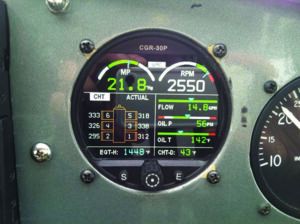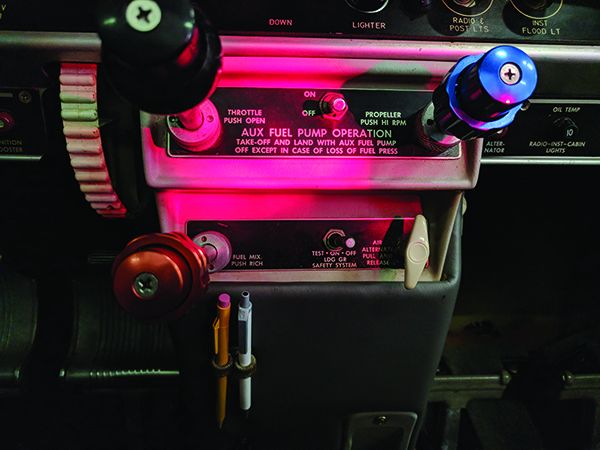As a VFR pilot who likes to fly at night, I enjoyed Jim Wolper’s “Prepping for Darkness,” September 2021), and a couple of additional points come to mind. First, up your personal weather minimums a lot—four-mile visibility might be fine during the day, but I won’t go unless it’s 10 at night. Second, beware the long final approach at night. I learned early that it’s somehow easy to drift well below the glide path without realizing it on a five-mile final to a well-lit runway over dark (and often hostile) terrain.
Keep up the good work.
Drake Hokanson – Via email
Good points all, thanks. With respect to getting too low on final, we all should be using the lighted visual approach path indicators that seem to be available in much greater number than a few years ago. Tying your descent to an ILS glideslope or RNAV glidepath indication, when available and even in visual conditions, is another good mitigation.
CYLINDER HEAD TEMPS
I just read Michael Banner’s article in your October issue (“Managing CHTs”). I must say this is the best written, most comprehensive and complete discussion I’ve read on the subject. Mr. Banner exhibits the best knowledge and comprehension of the subject since George Braly, Mike Busch the late John Deakin.

I read every article I can find about the “combustion event” and its effect on aircraft engine health and longevity. I recently returned to general aviation in 1998 (after 37 years flying airliners), and I read George Braly’s magnificent three-part article, “Back To The Future,” in the American Bonanza Society magazine.
What immediately caught my attention was Braly’s explanation of the cruise leaning procedure which was used on the Wright TC 18 turbo compound R-3350 engine, which powered the DC-7 I flew as copilot and flight engineer for American Airlines in the mid-1960s. Braly’s explanation that this procedure (which was vastly different from that which we used leaning the P&W R-2800s which powered the DC-6) put the TC 18’s mixture at the equivalent of 50 degrees lean of peak (LOP) EGT!
You have to remember that in 1998, LOP was still a dirty word and very controversial! I’ve been an advocate ever since and have gone to TBO and beyond twice over the nearly 3000 hours I’ve flown my A36. It boggles my mind that there are still pilots out there who are too cheap or uninformed to equip their airplanes with a modern engine monitor. With perhaps more informative articles like Michael Banner’s in the future, hopefully that may change!
Jim Piper – Palos Verdes, Calif.
We, too, studied at the Church of Lean of Peak in Ada and, like you, came away convinced that an engine monitor and intelligent leaning techniques not only save money but also enhance engine longevity and, thus, safety. Thanks for your kind words.
THE GO/NO-GO DECISION
My experience—in 182s, 172s and the M20s I fly now, all with and without over time—is that ADS-B is a great tool, used exactly as it is described in this article (“The Go/No-Go Decision,” April 2021). Ultimately, it’s not about penetrating weather; it’s about knowing where and how you can get around it, working with ATC to make it work. The Mark 1 eyeball is the key tool in convective weather. If you can’t see the buildups, (ideally confirmed by the radar depiction), it’s pretty much game-over to your nearest divert aerodrome.
Joe H. – Via web site
Thanks for the comment, Joe. While airborne weather radar remains the best solution for staying out of thunderstorms, the Nexrad presentation is a close second. But the key to using either information source is as an avoidance tool, not for penetration, especially given the typical time it takes for Nexrad to be displayed in the cockpit.




